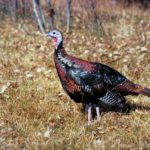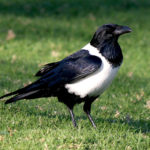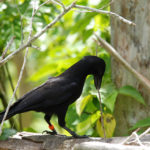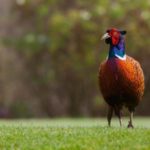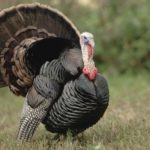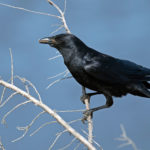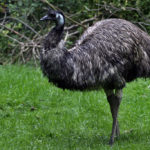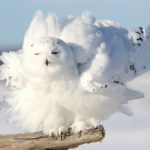Facts about magpies
 Magpies are birds, to which popular rumor ascribes a passion for petty theft and vain talk. Such a reputation for these birds has arisen not on an equal footing – magpies are really impressed with various shiny things, which they drag to their nest without discrimination. In addition, they are very sociable, and they are very fond of publicizing the neighborhood with loud croaking, sitting on a branch. Because of this croaking and common similarity, forty are sometimes confused with crows.
Magpies are birds, to which popular rumor ascribes a passion for petty theft and vain talk. Such a reputation for these birds has arisen not on an equal footing – magpies are really impressed with various shiny things, which they drag to their nest without discrimination. In addition, they are very sociable, and they are very fond of publicizing the neighborhood with loud croaking, sitting on a branch. Because of this croaking and common similarity, forty are sometimes confused with crows.
- The magpie’s body length is about 50 centimeters, and the wingspan is 90 centimeters. The tail is magpies longer than her body.
- Magpies – one of the most intelligent birds that exist in nature. They have complex social rituals, which, in particular, serve to express sadness. Magpies are also the only birds (and not mammals at all) who recognize themselves in the mirror – parrots, for example, consider their reflection as another individual.
- Magpies do not like dense forests, and willingly settle closer to people.
- Magpies are omnivorous – they can eat both plant and animal food (insects, small mammals or lizards). Sometimes these birds steal bones from dogs, and from the nests of other birds – eggs and chicks.
- The Chinese consider the forty a bird of happiness that brings good luck to people. In Russian folklore, the magpie is more likely associated with the image of gossips and simply gossipy women.
- The nest of forty is shaped like a ball with a small hole that serves as an entrance.
- To protect their offspring, magpies prefer to spend the night in large flocks.
- Magpies love the shiny objects very much. Birds decorate their trinkets with their nests, to bring themselves joy and attract a potential partner.
- Surplus food these birds buried in the ground, and then without any problems find these caches. A rare case of thoughtful reserves – squirrels, for example, usually can not find some of their numerous caches with stocks.
- Magpies collect ticks from the skins of large animals, sitting down on their backs. Birds can also pull out already bitten parasites.
- Nestlings leave their native nest when they are only 1 month old.
- Magpies are not migratory birds, but they are spread almost all over the world.
- Before you can get offspring, the magpie can build a dozen nests, then to choose from them one, the best. Extra nests will distract the attention of predators.
- At one time, magpies lay 7-8 eggs, which the female incubates for 18 days.
- Magpies begin to lay eggs before other birds – in April and early May, sometimes even in March.
- Magpies can recognize a particular person not by smell or voice, but by face. Usually such ability is possessed only by domestic, tamed animals.
- The sound of forty is very sharp and loud, so people are usually not too happy with the flock of these birds.
- Forty can be taught to count and clean your cells with the help of improvised means.
- Magpies are grouped together to protect against large predators and hunting for other birds.
- The area of the brain, forty, responsible for cognition, has the same relative size as the analogous part of the human brain.
- The ratio of body weight and brain in forty is the same as in orangutans, chimpanzees and gorillas.
- In the XIV century, Metropolitan Alexy officially forbade magpies to approach Moscow – he believed that under the guise of birds in the city witches arrive.
- Pagan Slavs also associated forty with evil forces. According to the legends, the witch, turning to this bird, could steal the moon, replace the unborn child in the womb with a frog or a broom, or extort someone else’s cow so that her milk is gone.
- The entrance to the nest of forty is always facing south, so that the dwelling is warmer.
- Life expectancy of Magpies, as a rule, is 12-15 years, but in exceptional cases they can live and twice as long.






